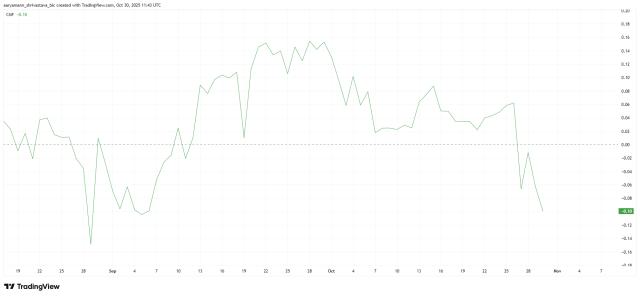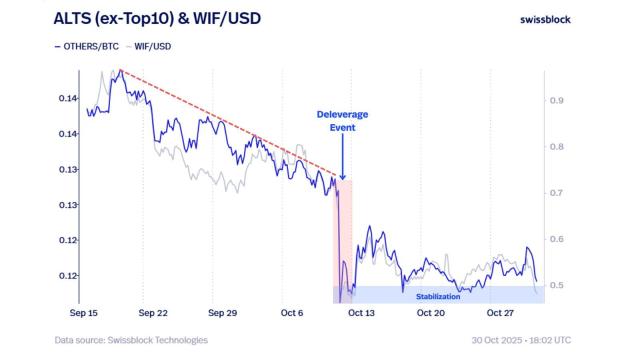Original title: "Behind the $2 billion Polymarket spending, the NYSE's self-rescue campaign"
Author: Chloe, ChainCatcher
In early October, ICE announced a massive $2 billion investment in Polymarket, sending shockwaves through the market. Almost simultaneously, Kalshi also announced a $300 million funding round at a $5 billion valuation. Overnight, the market landscape for prediction platforms was elevated to mainstream finance. Why did ICE need to make this move, transforming platforms that had long operated in a gray area into legal prediction tools? Are established Wall Street exchanges facing an urgent need for business transformation?
The NYSE's predicament: market share being eroded, and data business declining.
Looking at the current competitive landscape of US stock exchanges, the "US Equity Market Structure Compendium 2024" report indicates that the US stock trading market is highly fragmented and dispersed. The NYSE, owned by ICE, accounts for approximately 19.7% of trading volume, while NASDAQ holds 15.6%. In terms of market capitalization, NASDAQ has surpassed the NYSE. From June to September of this year alone, the former's market capitalization exceeded the latter's for four consecutive months, reflecting investors' preference for technology companies.
On the other hand, in terms of IPOs, Nasdaq, with 79 traditional IPOs, far surpasses the NYSE's 15, controlling the entry point for emerging companies to list. The increasing number of tech startups and growth companies choosing Nasdaq not only weakens the NYSE's listing fee revenue but, more importantly, deprives the NYSE of future growth drivers in market capitalization and trading volume.
Looking at the bigger picture, between 2000 and 2016, the combined market share of the NYSE and Nasdaq plummeted from approximately 95% to below 30%. This reflects a fundamental shift in the US stock market, where trading is no longer concentrated on mainstream exchanges but has become more dispersed across smaller exchanges, alternative trading systems (ATS), and various dark pools and over-the-counter trading venues.
According to Nasdaq's analysis, the current U.S. stock market has fragmented into three independent markets: traditional exchanges (approximately 35-40%), dark pools and private trading (approximately 25-30%), and retail and over-the-counter trading (approximately 30-40%). This fragmentation has led to a disjointed liquidity landscape.
Even if the NYSE tries to maintain its leading position, it will face fierce competition from all sides vying for a share of the pie. It will not only have to compete with Nasdaq, but also with emerging exchanges like Cboe, dozens of ATS platforms, and the vast dark pool ecosystem.
In addition, the data services segment, which was previously considered highly profitable, is also declining. According to ICE's full-year 2024 financial report released in February, revenue from exchange data and connectivity services was $230 million in the fourth quarter, a 2% year-over-year decrease. This indicates that the growth of traditional market data businesses (such as market data and subscription services) has reached a bottleneck, and market demand for traditional financial data is approaching saturation. However, ICE believes that although sales of traditional market data are cooling, there is still a market for customized, high-value indices and analytical tools.
Faced with various challenges, ICE has begun to adjust the NYSE's business segments in recent years. Last October, the SEC approved the NYSE's proposal for spot Bitcoin ETF options, marking a step in its attempt to seize the derivatives market. Derivatives trading typically generates higher transaction fees than spot trading, and the CME has long monopolized the futures market. By launching ETF options, the NYSE is attempting to gain a share of the derivatives market.
In addition, to strengthen the NYSE’s role as a data and index provider, in July of this year, ICE not only launched the Elite Tech 100 Index, but more importantly, made an investment in Polymarket, planning to package Polymarket’s real-time probability data into financial products and sell them to institutional clients.
The data behind prediction platforms is an important source of information for financial products.
ICE knows better than anyone: the forward-looking data provided by the forecasting market is something that traditional financial data cannot provide.
Leaving aside the gambler's mentality inherent in humans, the underlying logic of market prediction is based on "wisdom of crowds." In other words, when there are sufficiently diverse participants, collective predictions are often more accurate than those of individual experts. This is because participants are investing real money, and with this constraint, they will evaluate information more carefully and naturally cannot be outsiders.
According to a 2024 study by Charles University, prediction markets, platforms that allow participants to bet on future events, can demonstrate accurate predictive capabilities across various fields, including finance, economics, politics, and public policy.
You might think that the combined predictive power of ten experts in a particular field can cover a wide range of markets, but when thousands of people put their own money on an uncertain event, each person will use the information they have learned to make a judgment. Because all available information is combined, they can provide more accurate predictions than any single expert.
What ICE values is this predictive ability and the data it accumulates, which is an important source of information for financial products.
The NYSE's self-rescue campaign has redefined the business segments of traditional exchanges.
Of course, not all prediction markets achieve the same results. According to research by *Sports Forecasting*, the data quality of prediction markets depends on "market liquidity," defined by platform trading volume and the number of participants, and is positively correlated with the accuracy of predictions. In other words, prediction markets with higher liquidity tend to produce faster and more accurate results.
During the 2024 US presidential election alone, Polymarket processed over $3.3 billion in transactions in less than 15 months after its launch, peaking at $2.5 billion in November. Originally known for its political predictions, the platform has expanded to include sports, macroeconomic indicators, and cultural events, covering everything from Federal Reserve interest rate decisions to TV series finales.
When such massive trading volumes and liquidity are recognized, these prediction platforms, once considered illegal online gambling, have transformed into much-needed infrastructure for the financial markets. Now, ICE is integrating Polymarket's data into its internal trading system, a process akin to the financial sector's integration with the Bloomberg Terminal service, a data provider offering financial experts access to real-time financial market data.
In other words, ICE is essentially seeking to complement what is lacking in the financial markets. According to Kalshi's 2025 statistics, when predicting inflation data, the Bloomberg economist consensus was only 20% accurate, while the prediction market was 85% accurate, a difference of 65 percentage points. Economists underestimated inflation in their eight-month forecasts, while the prediction market accurately captured market reality thanks to participants from diverse backgrounds.
If the two parties cooperate, their data will complement rather than replace traditional analysis.
The NYSE's self-rescue efforts have essentially redefined the business model of traditional exchanges. From the loss of the IPO market to declining trading volume and sluggish growth in data services, it can no longer rely solely on the traditional exchange's profit model to maintain its competitiveness.
It's easy to imagine that when ICE packages and sells this data to hedge funds, investment banks, and central banks, they're not selling history, but rather the pricing power over the future. In this increasingly unpredictable world, this may be the most valuable commodity.







